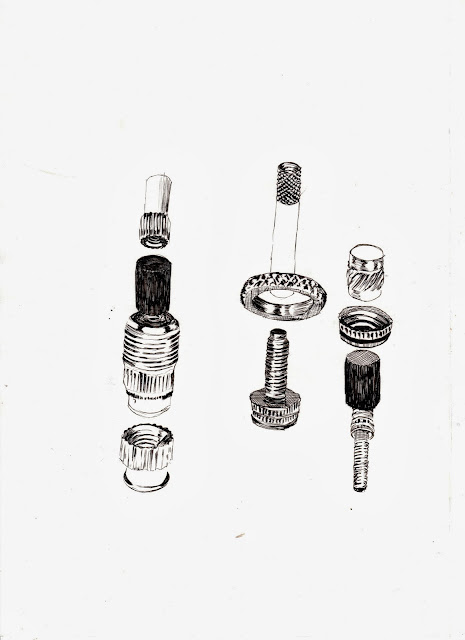Looking at inspiration for form and texture from industrial plastic machines themselves. Here are some drawings I did.
Here I focused on the stack-able element, with the different pieces interacting
with each other. Also exploring simple industrial textures like spiral screw, indents and cross hatching.
This injection moulded form was interesting smooth
corner less contours, machine like mould aesthetic.





































